DIY Humidity Sensor
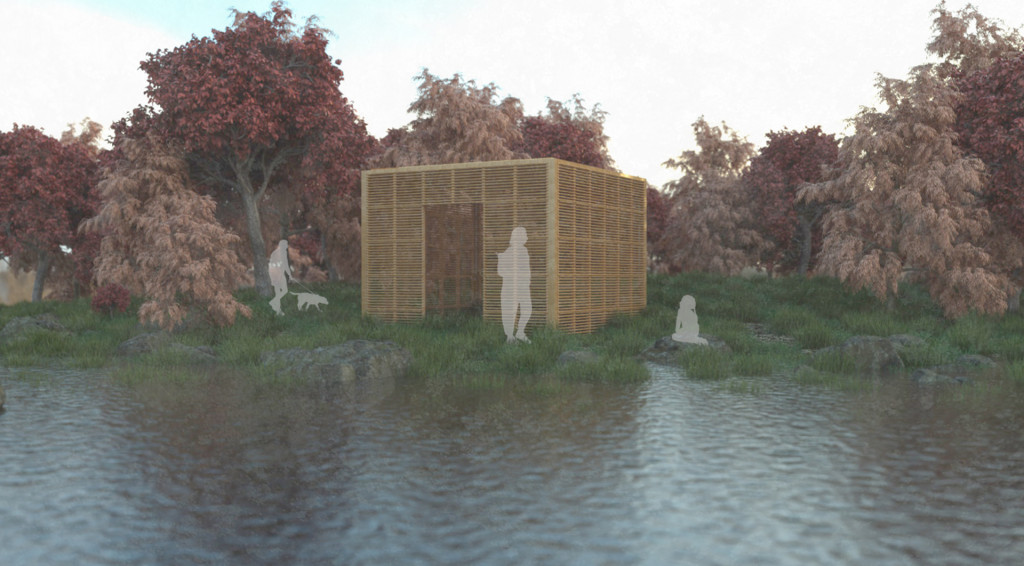
Phase 1: An exploration in chitosan and palm leaf biomaterials
Aim:
To digitally design options for creating a biomaterial using Chitosan and Palm leaf as the main materials. Finally, one option is to be chosen and a fabrication strategy is to be developed.
Abstract:
Voronoi Humidity Sensor explores what happens when palm leaf and a mixture of chitosan, glycerine and cellulose are combined to create a bio material. The objective is to create voronoi structures similar to that of pollen, by creating joints out of the chitosan mixture. As the chitosan expands with humidity, the structure opens up to create the voronois.
Design References:
Stomata are small pores that exist either on the leaf or on the stem of a plant. Their function is to open or close. They open to let Carbon Dioxide in and to release vapour and Oxygen. The stoma is made up of two guard cells which control the state of the stoma. Typically they open during the day and close at night. There are also different compositions of cells which dictate the type of stoma a plant has.
To the right of the diagram is a zoomed in photograph of a seed covered in pollen. The pollen comprises of a 3D voronoi structure which encases the seed.
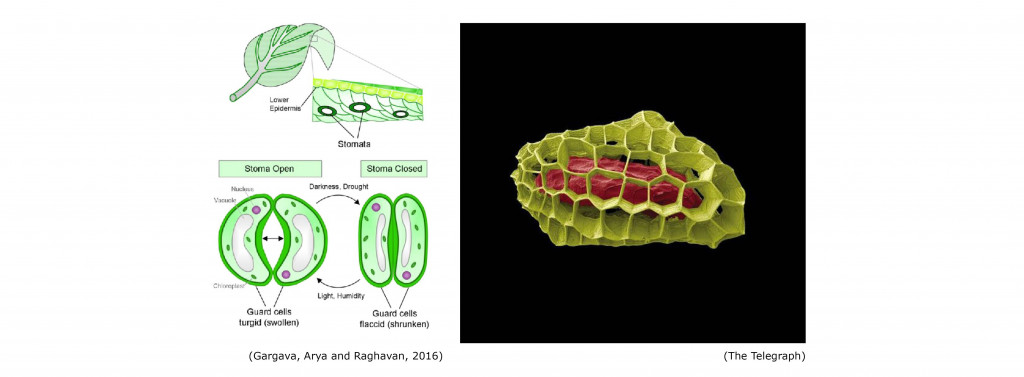
Preformative Goals and Parameters:
Goals:
- Active Bending:“Curved beams or surfaces that base their geometry on elastic deformation of initially straight elements.”
- Create bending in both the x and y planes like that of the Jericho Rose.
- Then relate the bending curvature back to the amount of humidity
Parameters:
- The Cross Section of Substrate Layer
-Width
-Thickness - Shape of the Joint2
- Position of the Joints
- Number of Joints
Catalogue of Biomaterial Options:

Chosen Option: Option 3
Option 3 allows for exploration into the impact of the palm leaf’s cross-section. This will help to understand also the impact the chitosan mixture will have on the palm leaf. The chitosan mixture of glycerine and cellulose will add flexibility to the joints. These joints split the fibres allowing bending to occur.
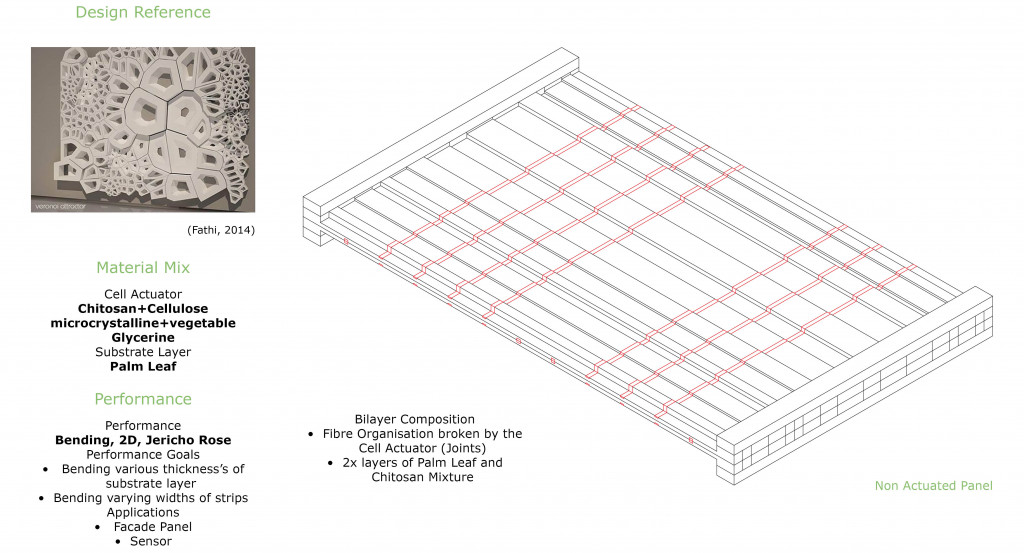


Fabrication Requirements:
CNC Milling Method will allow to achieve different thickness’s of the material as well as it is able to create the pockets for later adding the chitosan.
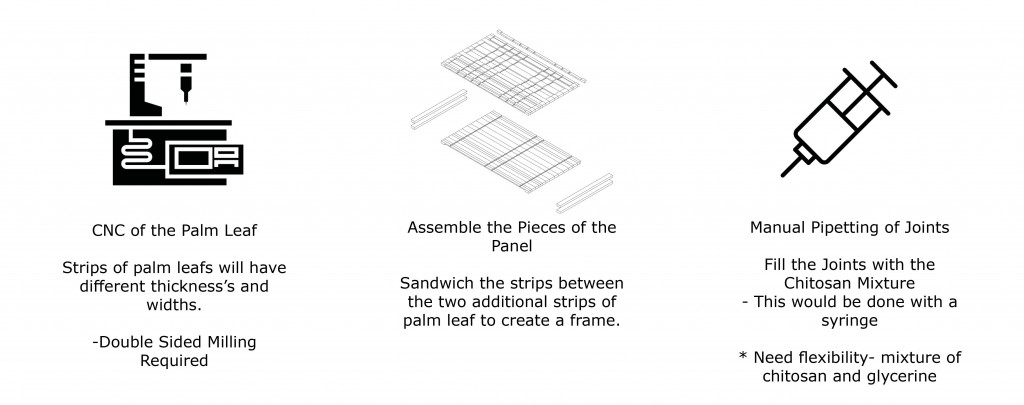
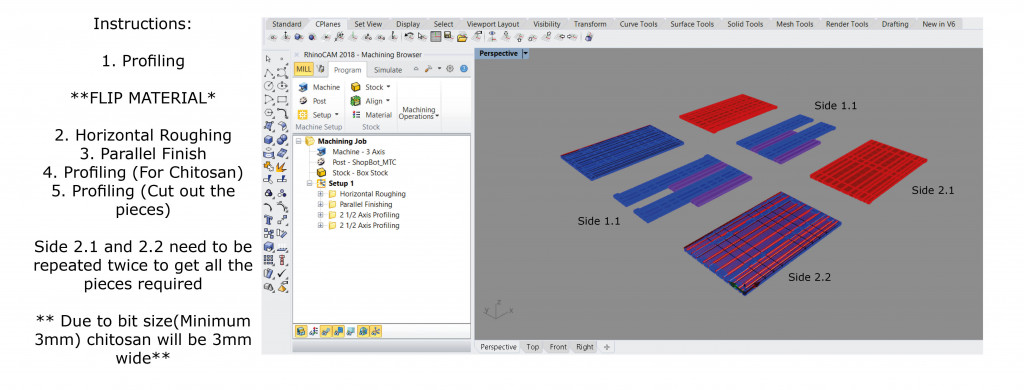
Phase 2: Testing with Chitosan Bioplastics
Experiment 1 Actuator Tests:
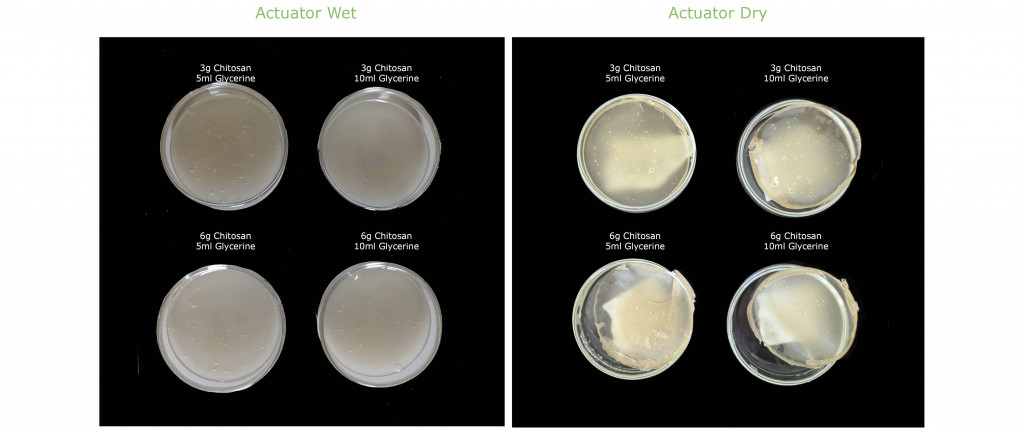
After testing different ratios of material the 6g chitosan mix with 5ml Glycerine was chosen for the rest of the experiments. It dried the fastest and still had flexibility while reacting the humidity.
Setting up the Experiments:
How will the number of lines and pattern of the Chitosan mixture affect the substrate layer in relation to its grain?
Below are the geometries to be tested. The red lines represent the chitosan actuator.
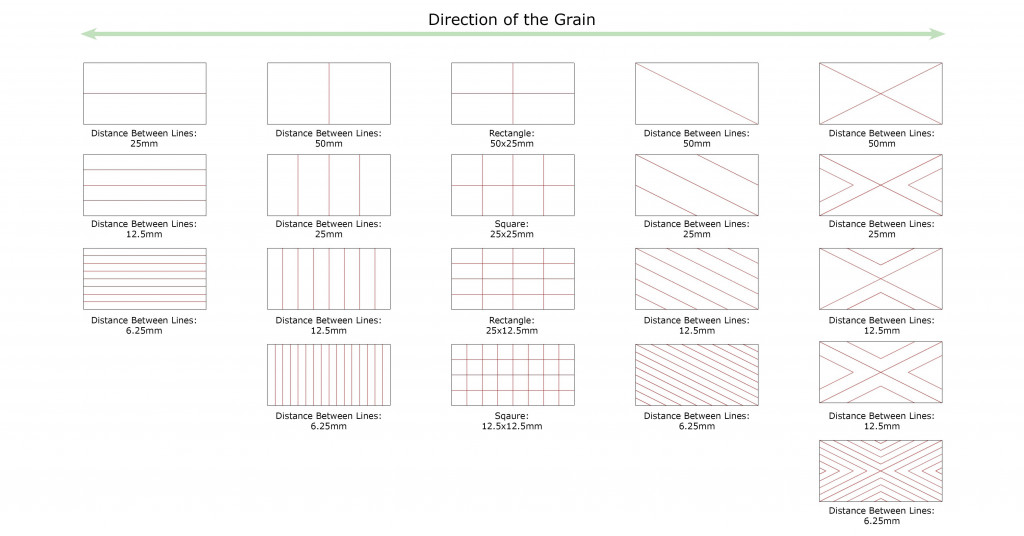
Experiment 2: Initial Test
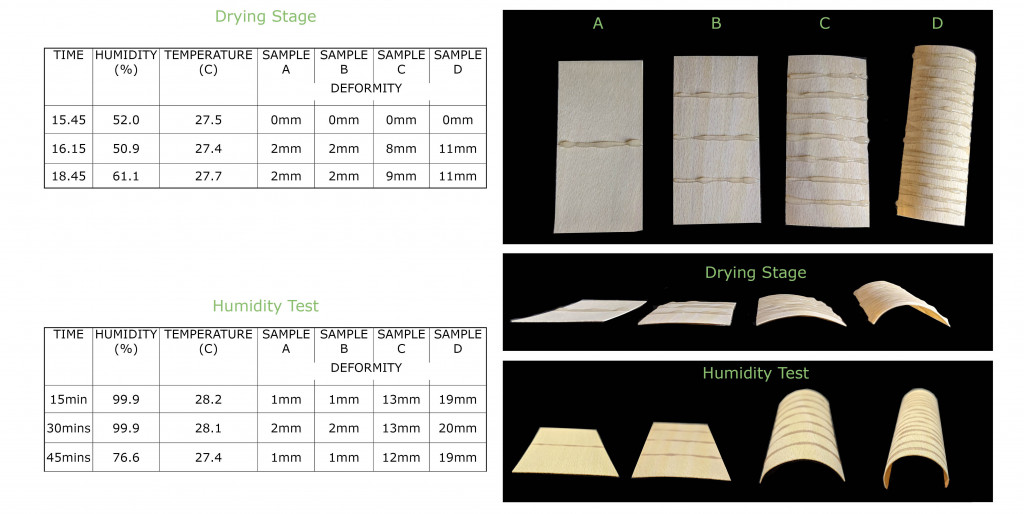
The results are then digitally simulated using Grasshopper and Kangaroo.
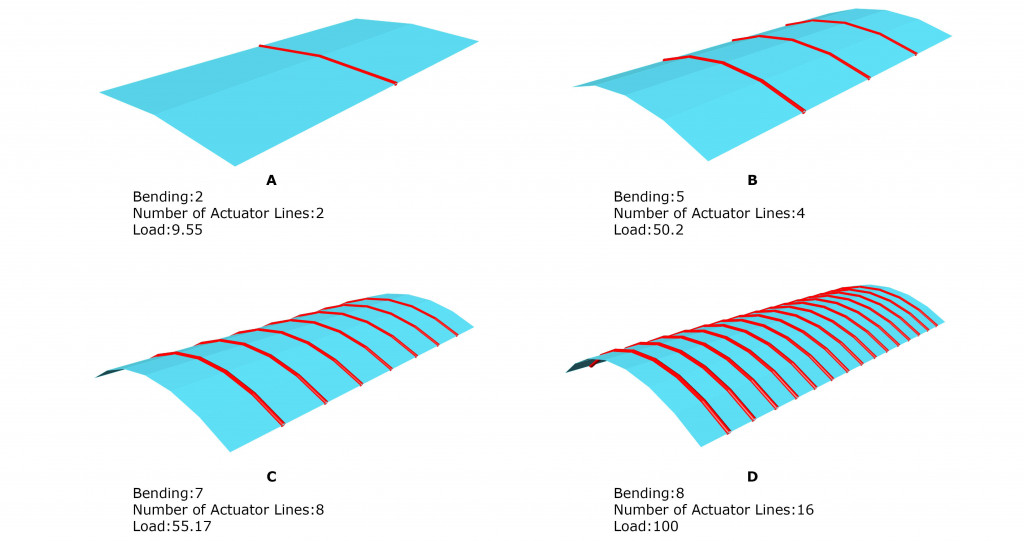
Experiment 3: Testing the Geometries
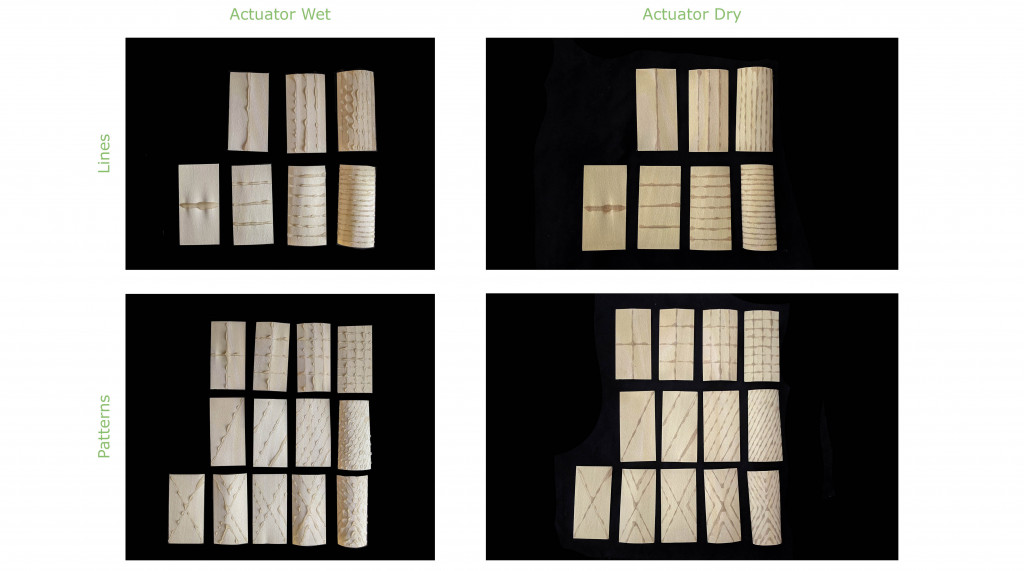
Below are the results of the experiments and the digital simulations.
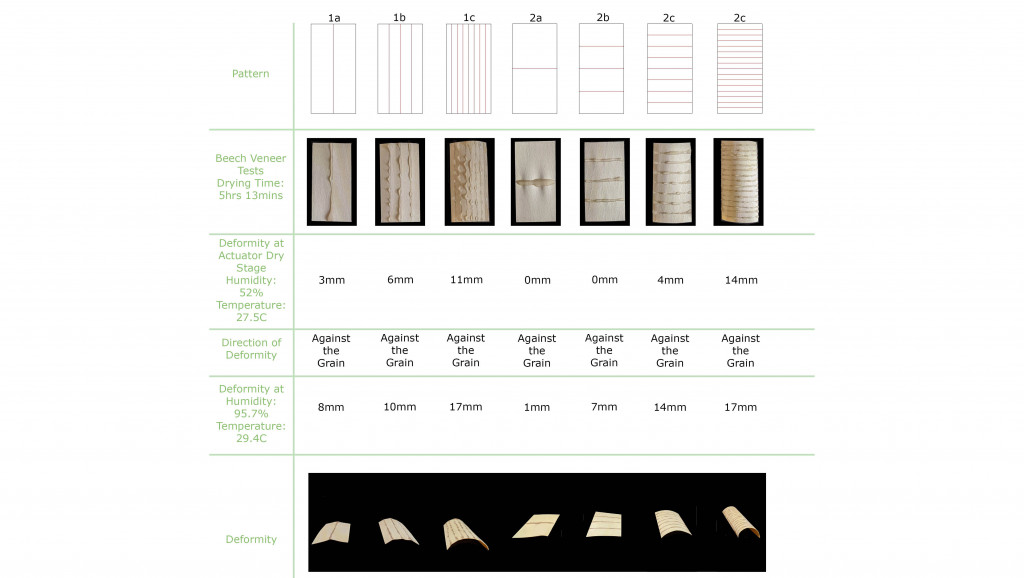
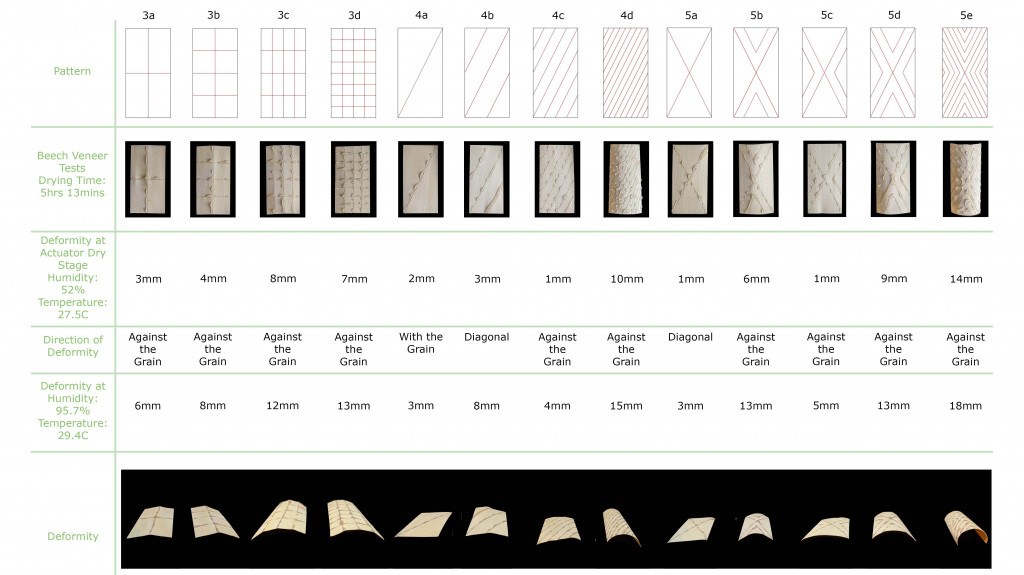
Group 1:
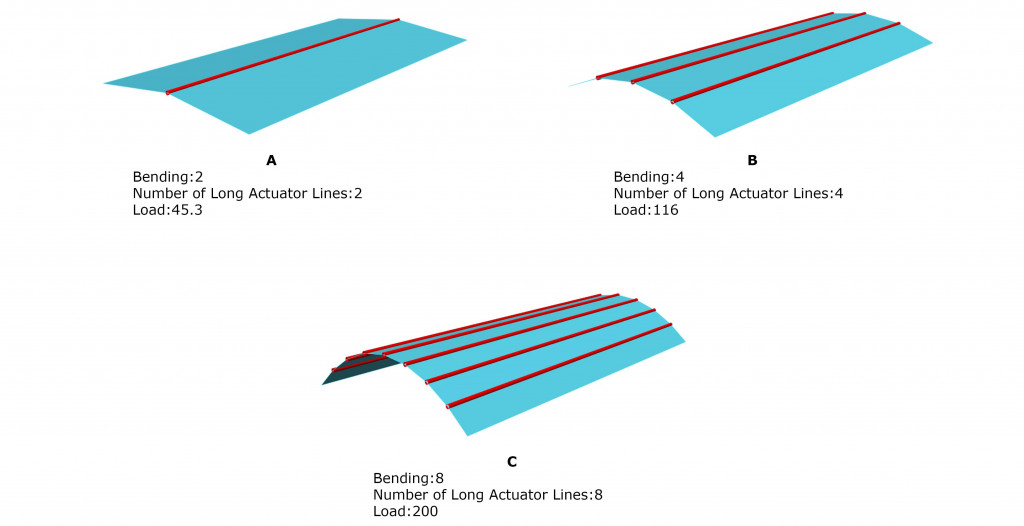
Group 3:
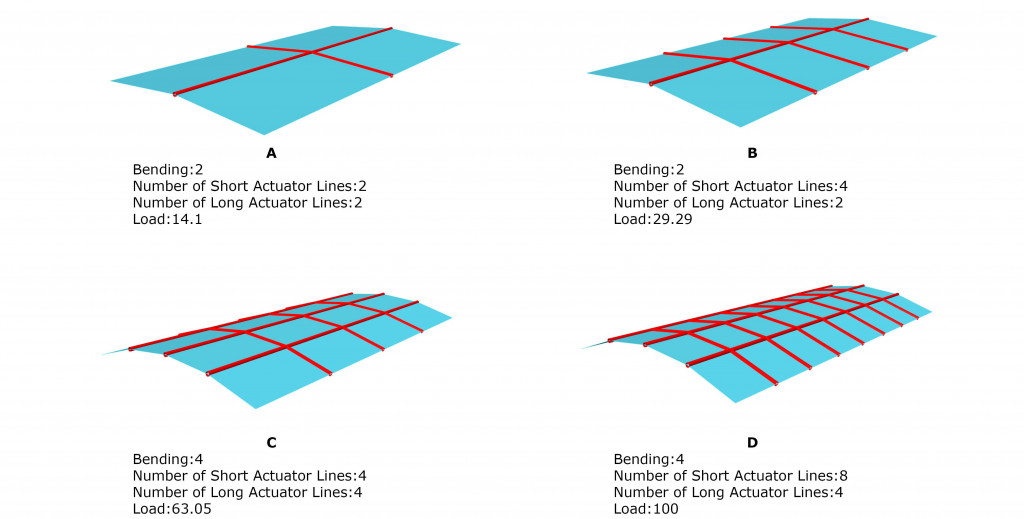
Conclusions:
- Higher the density of actuator lines, the more bending.
- The bending occurred against the grain (short side).
- Patterns did not cause a different type of bending or shape change.
- Higher humidity causes greater bending.
Architectural Application Module:
The module consists of a simple timber frame that has veneer panels attached to it. The veneer panels will react with the humidity, opening and closing the structure.
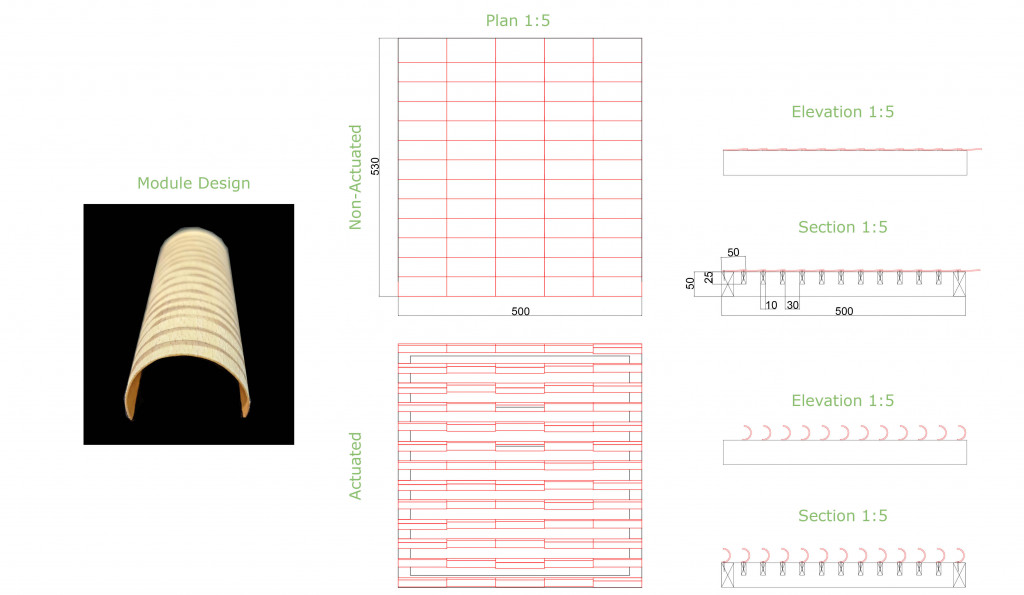
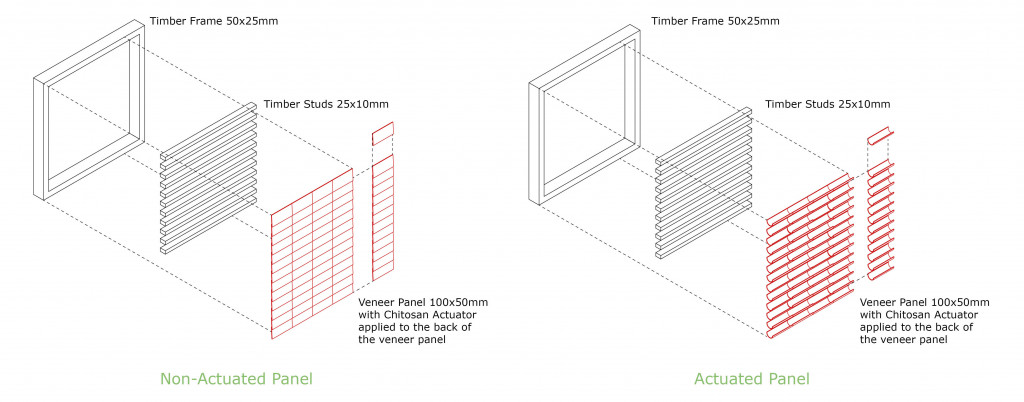

DIY Humidity Sensor is a project of IAAC, Institute for Advanced Architecture of Catalonia developed in the Master in Advanced Architecture 2019/20 by Students: Fiona Demeur and Faculty: Ricardo Mayor and Nuria Conde Pueyo